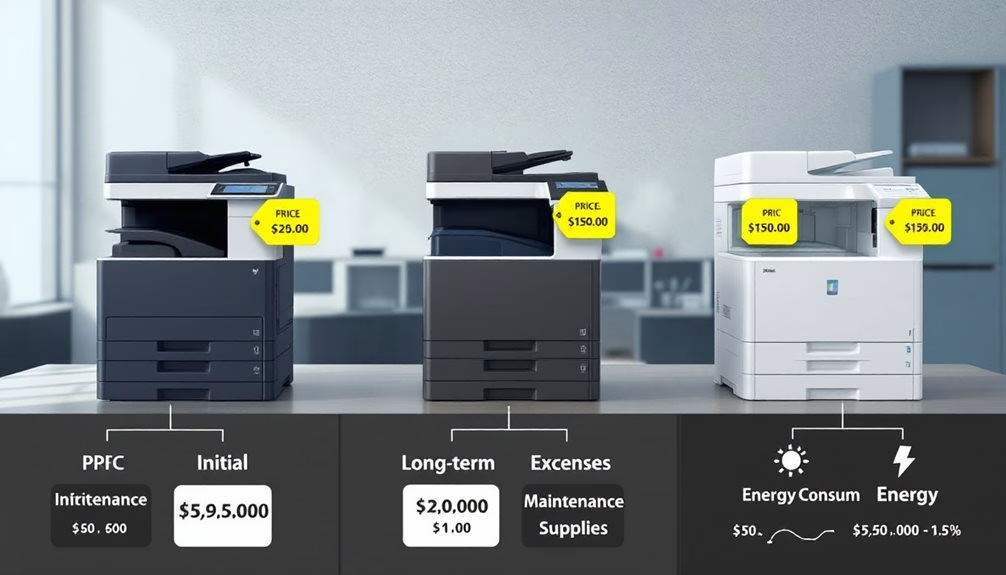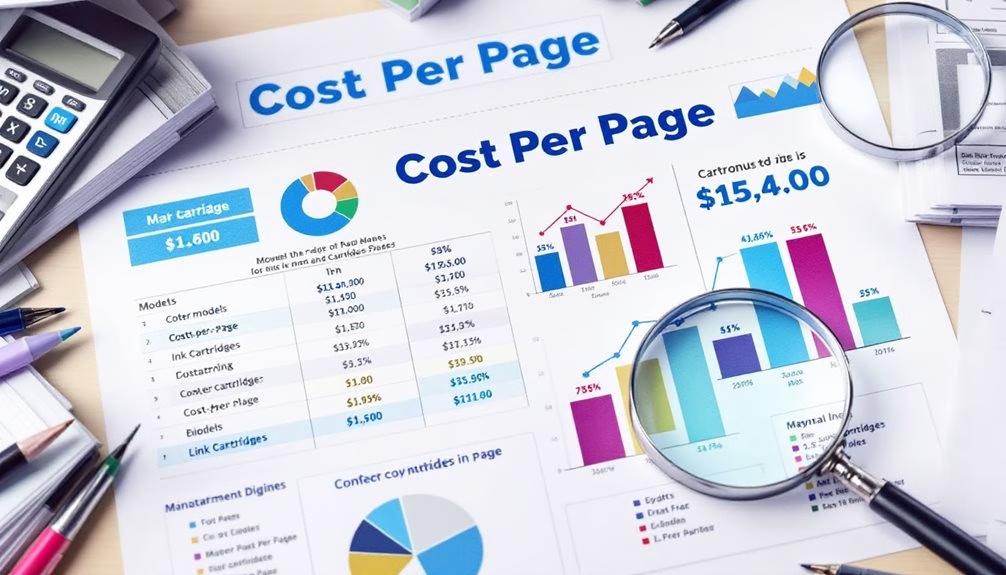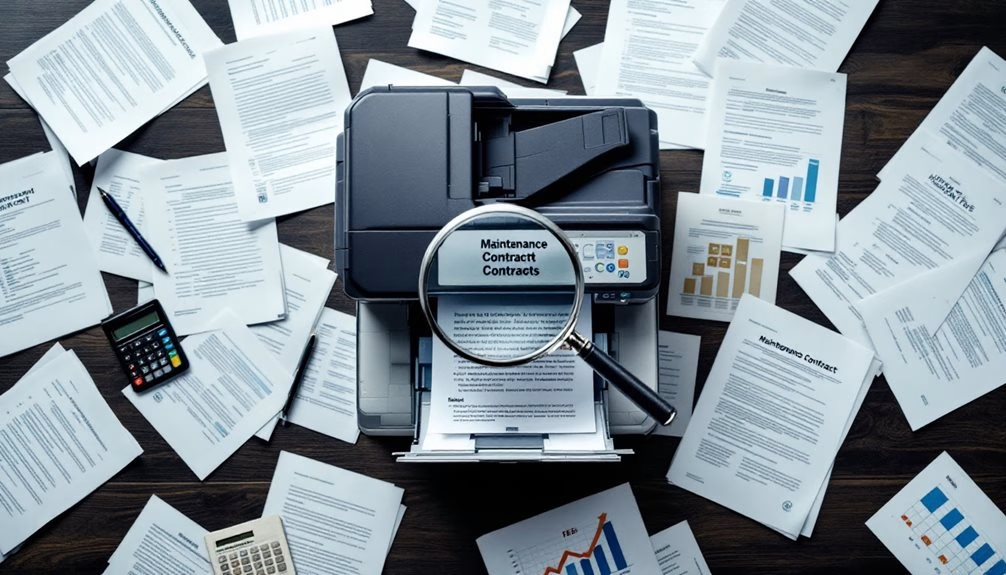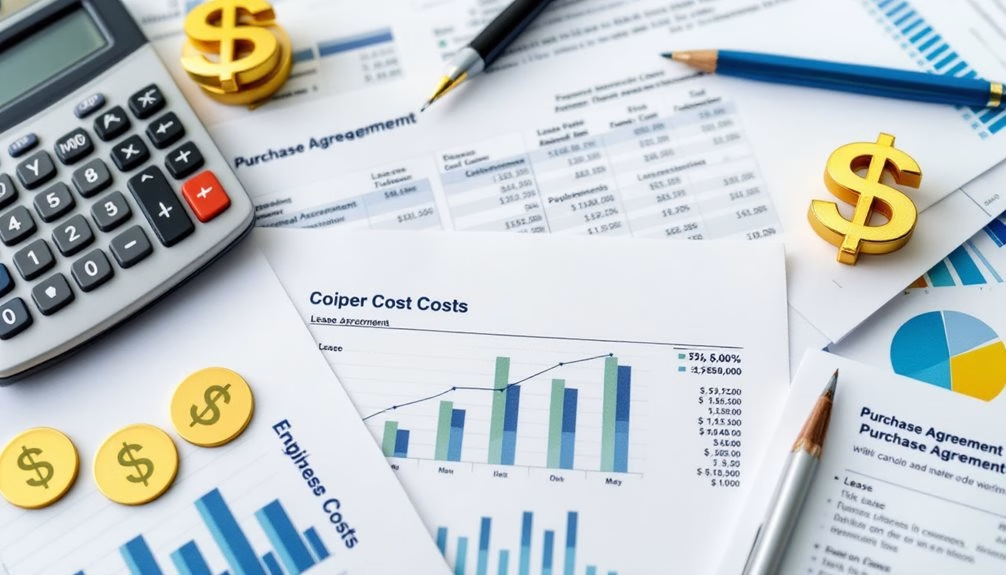We’ve all been there—staring at brochures and price sheets, trying to figure out if that bargain copier is truly a good deal. But the sticker price doesn’t tell the whole story. To make a smart investment, we need to look beyond what’s written on the price tag and consider what it’ll really cost us over time. Let’s unpack the hidden expenses and sneaky fees that could turn that seemingly affordable copier into a budget nightmare.
Expert Highlights
- Calculate total cost of ownership including consumables, maintenance, energy consumption, and expected lifespan, not just purchase price.
- Analyze cost-per-page metrics by dividing toner costs by yield and including maintenance and paper expenses.
- Review service agreements for hidden costs like escalation clauses, minimum volume requirements, and excluded parts.
- Compare financial implications of leasing versus purchasing based on tax benefits and impact on available credit.
- Evaluate energy efficiency through Energy Star ratings and power-saving features to estimate long-term operating expenses.
Evaluating Upfront Costs vs. Total Cost of Ownership

When comparing copier models, why do many businesses focus solely on the sticker price?
It’s natural to prioritize immediate costs, but this approach often leads to greater expenses down the road.
We need to look beyond the initial investment to understand the total cost of ownership. This includes consumables like toner and paper, maintenance contracts, energy consumption, and expected lifespan of the machine.
A seemingly expensive copier might actually save your team money over time if it offers lower per-page costs and requires less frequent repairs.
Let’s make decisions that benefit our organization’s long-term budget, not just this quarter’s bottom line.
Our flexible leasing options can be tailored to your specific budget and operational needs, making higher quality equipment more accessible without large upfront investments.
Breaking Down Cost-Per-Page Analysis

Understanding the total cost of ownership brings us directly to one of the most revealing metrics in copier evaluation: the cost-per-page.
This calculation helps us see beyond the sticker price to determine what we’ll actually pay over time.
Here’s how we break it down:
- Calculate toner costs by dividing cartridge price by the yield (number of pages per cartridge)
- Add maintenance costs, including service agreements divided by expected volume
- Include paper costs and factor in average coverage percentages (color pages cost more than black and white)
These calculations let’s compare models honestly and avoid unexpected expenses down the road.
Working with factory-trained technicians ensures your equipment delivers its expected cost-per-page performance over its entire lifecycle.
Hidden Expenses in Service Agreements and Maintenance

Service agreements often contain financial landmines that can explode your budget if you’re not careful.
We’ve seen companies caught off-guard by escalation clauses that increase costs by 10-15% annually.
Watch for “minimum volume requirements” that charge you for copies you never made.
Beware the phantom copy trap: paying for thousands of prints that exist only in your service agreement’s fine print.
Many vendors also exclude parts like fuser units and transfer belts from “all-inclusive” contracts, leading to surprise expenses.
Response time guarantees sound great, but check if they include parts availability.
Nothing’s worse than a 4-hour response time with a 2-week parts delay.
Considering equipment leasing options can help avoid these unexpected maintenance costs while providing more predictable monthly payments.
Lease vs. Purchase: Financial Implications for Your Budget

While many businesses focus solely on the monthly payment, deciding between leasing and purchasing a copier requires a more thorough financial analysis.
We recommend considering how each option aligns with your organization’s cash flow and long-term goals.
Let’s examine the key financial implications:
- Tax benefits – Purchases offer Section 179 deductions while leases provide monthly expense write-offs.
- Budget flexibility – Leasing preserves credit lines and capital for core business needs.
- Total cost of ownership – Purchasing typically costs less long-term but requires upfront investment.
Your decision should ultimately reflect your company’s financial strategy and the specific technology lifecycle relevant to your team.
Flexible leasing options can help you achieve a lower total cost of ownership while conserving capital for other business priorities.
Energy Efficiency and Long-Term Operating Costs

Beyond the initial purchase or lease decision, a copier’s energy consumption markedly impacts your total cost of ownership.
We recommend checking Energy Star ratings and typical kilowatt-hour usage before committing to any model.
Modern copiers often include power-saving modes that can reduce electricity costs by 30-40% over older units.
Slash your office energy bills dramatically with today’s intelligent copiers featuring advanced power management technology.
When we compare models, let’s not overlook toner efficiency either—some machines use less toner per page while maintaining quality.
Together, these factors add up greatly over a copier’s 5-7 year lifespan.
Implementing a Managed Print Services solution can further reduce printing expenses by up to 30% through improved device usage and lower supply costs.
Frequently Asked Questions
How Do Digital Copiers Compare to Traditional Models in Cost?
We find digital copiers typically cost more upfront than traditional ones, but they’re often cheaper long-term due to lower maintenance costs, fewer supplies, and better energy efficiency.
Can I Negotiate Copier Service Agreements or Are Prices Fixed?
We can absolutely negotiate copier service agreements. Prices aren’t fixed, and most vendors expect haggling. Ask for better rates, free maintenance visits, or extended coverage to get the best deal.
How Often Should Office Copiers Be Replaced for Optimal Cost-Efficiency?
We recommend replacing office copiers every 3-5 years for ideal cost-efficiency. After this timeframe, maintenance costs typically increase while newer models offer better energy efficiency and productivity features we all need.
Do Refurbished Copiers Offer Significant Savings Over New Models?
Yes, we’ve found refurbished copiers typically offer 30-50% savings over new models while still providing reliable performance. They’re a smart choice for our budget-conscious team members.
What Financing Options Exist for Small Businesses Needing High-End Copiers?
We offer leasing, equipment loans, vendor financing, and business lines of credit. Many suppliers also provide rent-to-own programs with flexible terms tailored for small businesses like yours.
Expert Final Thoughts
We’ve shown that comparing copier costs requires looking beyond sticker prices. By calculating cost-per-page, evaluating service contracts, weighing lease versus purchase options, and considering energy efficiency, we’ll make smarter long-term investments. Let’s remember that the cheapest model upfront isn’t always the most economical choice. With these strategies, we’re equipped to select copiers that truly align with our budget and operational needs.
About the Expert
Rafael M.
CEO of JR Copier
With over 35 years of hands-on experience in the copier and office printer industry, Rafael brings unparalleled expertise to every client interaction. His journey from service technician to CEO provides him with comprehensive understanding of all aspects of the business.
Areas of Expertise: Copier and printer sales, equipment leasing strategies, maintenance solutions, and managed print services. Rafael's deep industry knowledge ensures clients receive expert guidance, transparent pricing, and exceptional service for all their office equipment needs.
Connect on LinkedIn